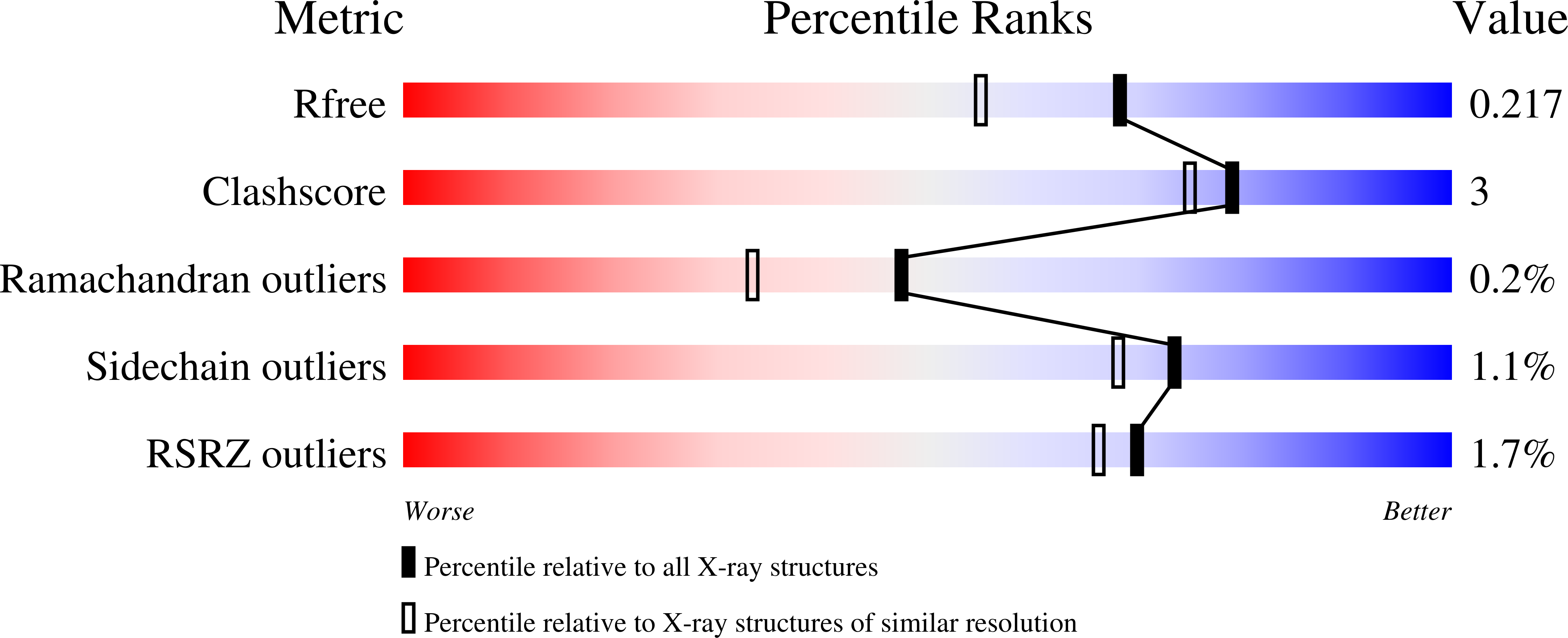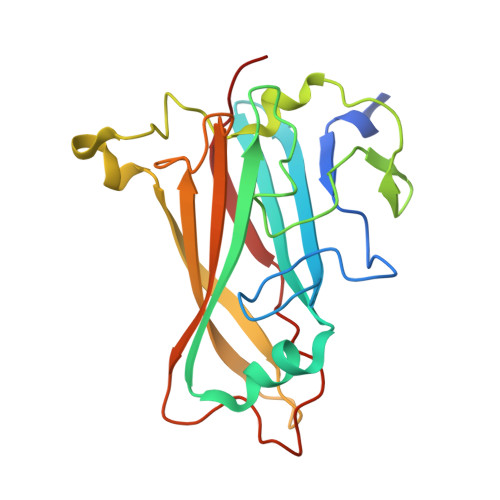An arginine switch in the species B adenovirus knob determines high-affinity engagement of cellular receptor CD46
Persson, B.D., Muller, S., Reiter, D.M., Schmitt, B.B., Marttila, M., Sumowski, C.V., Schweizer, S., Scheu, U., Ochsenfeld, C., Arnberg, N., Stehle, T.(2009) J Virol 83: 673-686
- PubMed: 18987134
- DOI: https://doi.org/10.1128/JVI.01967-08
- Primary Citation of Related Structures:
3EXV, 3EXW, 3F0Y - PubMed Abstract:
Adenoviruses (Ads) are icosahedral, nonenveloped viruses with a double-stranded DNA genome. The 51 known Ad serotypes exhibit profound variations in cell tropism and disease types. The number of observed Ad infections is steadily increasing, sometimes leading to fatal outcomes even in healthy individuals. Species B Ads can cause kidney infections, hemorrhagic cystitis, and severe respiratory infections, and most of them use the membrane cofactor protein CD46 as a cellular receptor. The crystal structure of the human Ad type 11 (Ad11) knob complexed with CD46 is known; however, the determinants of CD46 binding in related species B Ads remain unclear. We report here a structural and functional analysis of the Ad11 knob, as well as the Ad7 and Ad14 knobs, which are closely related in sequence to the Ad11 knob but have altered CD46-binding properties. The comparison of the structures of the three knobs, which we determined at very high resolution, provides a platform for understanding these differences and allows us to propose a mechanism for productive high-affinity engagement of CD46. At the center of this mechanism is an Ad knob arginine that needs to switch its orientation in order to engage CD46 with high affinity. Quantum chemical calculations showed that the CD46-binding affinity of Ad11 is significantly higher than that of Ad7. Thus, while Ad7 and Ad14 also bind CD46, the affinity and kinetics of these interactions suggest that these Ads are unlikely to use CD46 productively. The proposed mechanism is likely to determine the receptor usage of all CD46-binding Ads.
Organizational Affiliation:
Interfaculty Institute for Biochemistry, University of Tübingen, Tübingen, Germany.
















